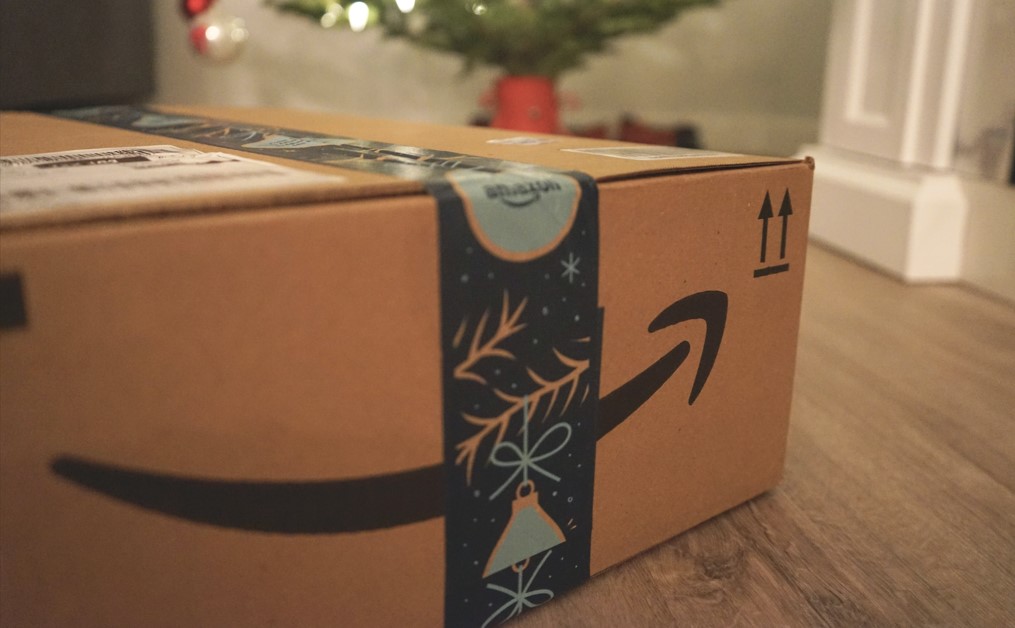
Think of the perfect Amazon listing. What characteristics actually convince you to press “add to cart?”
Authentic product photos, clear, well-written descriptions and bullets, and positive, yet honest reviews.
Plus, it’s probably a product you found right at the top of the first search results page.
How do you get your product listing to rank (and convert) on Amazon?
Follow this step-by-step Amazon SEO guide!
Table of Contents
What is SEO for Amazon?
Amazon SEO helps you improve your Amazon listing discoverability to your target audience. Following Amazon SEO best practices for keywords, descriptions, photos, and customer experience will help improve Amazon listing quality and boost rankings, traffic, and sales.
Plus, this traffic is organic: you’re not paying for every view or click of an ad. Once you get your listings to rank, you can exponentially grow your traffic without the expense of paid marketing.
Just like websites write articles to rank on Google, Amazon sellers should be optimizing their listing to rank on Amazon’s search engine result pages (SERPs). Amazon wants their customers to make a purchase, so they rank product offerings based on relevance, reviews, number of sales, and more.
Amazon uses their unique A10 algorithm, an upgrade from their previous A9 algorithm, to find optimized product listings and rank them higher. Both algorithms intend to improve product sales, but differ in how they make that happen.
The A9 approach gave sellers better ranking with search keywords, ads, and pay-per-click. The newer A10 system focuses more on the customer experience.
Sellers with a consistent sales history, more organic sales, and higher seller authority will rank higher in searches than newer, untested offerings. The algorithm also has stricter rules in place to weed out low-quality listings and inauthentic reviews.
These steps ensure that Amazon customers have a high quality experience. Just like any other business, Amazon wants users to return. How do you get them to return? Find them incredible products that they love.
How Amazon’s SEO Ranking Works
The A10 algorithm is more focused on profits than Google, so Google SEO and Amazon SEO are definitely different. Review quality and sale numbers impact listing rankings in addition to product listing content.
Let’s take a look at how Amazon’s SEO works.
1. Search Box
Step 1: potential customers search for your product. They use the handy search function on Amazon’s home page, typing whatever keyword they think will best retrieve their desired product.
Like Google, Amazon tries to help narrow it down by suggesting more specific keywords. Amazon wants to help potential buyers find exactly what they need – and fast. If they don’t, users could head directly to another eCommerce site.
Once searchers hit enter, Amazon shares the most relevant results according to its algorithm.
What are the ranking factors that determine those results? The algorithm uses keywords, seller authority, customer reviews, shipping time, price, and customer purchase history to present the best results for their search. The algorithm is learning all the time, and reacting to the newest data.
2. Ranking SEO Feedback Loop
Sellers with a consistent sales history, more organic sales, and higher seller authority rank higher in searches. In other words, the more sales you get, the more exposure you get in searches, the more traffic you’ll get, and your selling potential continues to rise.
But how do you break into this cycle if you’re a new seller or don’t have a history of consistent sales? The answer is enriching your product listing. For every listing you must:
- Add high-volume, related, relevant keywords to your title as well as in your product listing. Keywords are critical for getting more organic sales, which rank higher than sales won through ad campaigns. The caveat to this is that you don’t want to dump every keyword into your listing and title – only those that will give you the most bang for your buck.
- Use bullet points. These are key to helping the algorithm understand everything about your product. They also make it easier for customers to quickly understand product features in a clear, concise way.
- Include high quality images. A picture paints a thousand words, and high quality images give the impression that both the seller and the product itself are high quality. They also help show the customer if this is the right product for them.
3. Top-Ranking Results: Amazon’s Choice, Best Sellers, and Sponsored Products
Top-ranking results usually have high ratings from customers, a best-seller status, and competitively optimized pricing or discounts to appeal to customers. And if you’re lucky enough to score an Amazon’s Choice banner, you’ll likely end up in the top SERP rankings.
Additionally, sponsored (cost-per-click, CPC) products tend to appear on the initial search results page. But if you want one of those spots, you’ll have to pay for it. CPC posts are only accessible to Amazon sellers in Amazon’s Brand Registry. This is a more expensive way to end up at the top of search results and remember that Amazon’s algorithm values organic sales more than paid sales.
Ultimate Amazon SEO Checklist
Amazon’s top results appear seconds after your search. But it can be almost impossible for sellers to make it there without prioritizing Amazon SEO. At Sellesta, our goal is to get sellers ranking on Amazon fast, and this Amazon SEO guide is the perfect start.
1. Conduct Keyword Research
Keywords are powerful tools that link customers to your products. You must predict how Amazon users envision your product or its solution and how they might put it into words. If you’re describing your product just as your ideal customer is, it’s more likely they’ll find your listing.
Here are a few places to start your keyword research:
- Play around with the search box: Plug words and phrases into Amazon’s search bar and take notes on what Amazon suggests in the drop-down list. You’ll get an idea of the terms that customers use and what could be the best match for your product.
- Filter your search: Play with filters to align search results closer to your actual product and take notes.
- Use Amazon-specific keyword tools: Your manual search is a good starting point, but using an Amazon SEO tool like Sellesta makes this process faster and easier. Our keyword research is unique in that it’s integrated into listing optimization. Instead of finding keywords on a separate application and then integrating them manually into your listings, our platform includes list scoring, optimization, keyword research, and suggestions all at once. All you do is input your product listing, and we tell you what keywords to include throughout your heading, descriptions, bullets, and more. Plus, our AI content generator helps you complete your product listings in just a few clicks.
- Monitor keyword performance: Check frequently to note changes in Amazon’s keyword suggestions. Whether it’s the time of year, specific holiday season, or a new trend, top keywords can change over time.
- Review competitor listings: What appears in the search results? Take note of your competitors, especially the ones in the top ten spots. Notice how they title and describe their product listings. Pro tip: Sellesta analyzes your competitors’ products, rankings, and price changes in real time. Our AI also analyzes key tags and the emotional tone of key tags to break down what customers love (or don’t love) about a competitor’s product. Make your product listing stand out by addressing these concerns and emphasizing exactly what you know customers appreciate about this product type.
Sellesta’s listing optimization.
2. Optimize Your Product Title
This step is important — Amazon’s A9 algorithm flags, dissects, and analyzes your product title for relevance.
You probably have some ideas from looking at competitor titles, but here are some additional tips to optimize your title:
- Prioritize relevance: Don’t use subjective keywords in your title (like “fantastic” or “best seller”). Make sure every word identifies your product without any superfluous information.
- Make it concise: Shoppers will scan your product in half a second. They won’t waste time reading wordy titles.
- Include specific keywords: While keeping it short and sweet, you also want to include helpful keywords. If you’re selling blue-light glasses, not just eyeglasses, make sure to include that in your title.
On top of these general tips, Amazon has some specific technical advice for every product title:
- 60-80 characters, depending on your product category
- No promotional phrases
- No decorative characters ($$, ~, etc.)
- Digits instead of spelled-out words (1 not one)
- Brand name first, but no merchant names
- Punctuation is okay but non-language characters aren’t
- No all CAPS titles; just capitalize the first letter
3. Optimize Product Description and Features
Ideally, you’ll deliver clarity and detail in your listing — but if you must prioritize one, it should be clarity. Customers want to know the essential details of their items but don’t want to read too much.
Include a short, grammatically-correct paragraph highlighting how your product fits your customer’s pain point and what it entails. Then, add bullet points for key information.
Some features you might consider for bullet points include:
- Size and fit
- Material (leather, plastic, etc.)
- Packaging
- Color
- Brand
- Use instructions
- Condition
Don’t forget to add a brand designation and include the brand in your description.
Need some support? Sellesta’s platform maintains information on over 20 million listings, offering bullet-point suggestions to optimize your listings and descriptions.
4. Use Great Images
Online shoppers are visual people. They can’t feel the product in their hands, so they’ll rely on your words and visuals to understand its benefits. Great product images can highly impact conversion rates. Consider using:
- High-resolution, professional photos
- Multiple photos
- High-quality 3D models
- Videos
- AR technologies for different angles and contexts
You might consider showing photos of the product outside the package. Additionally, take some shots of the product in use or in a video. Inspire your audience and help them envision themselves using it.
Finally, make your images high-quality but realistic. Customers can spot photoshopped, inauthentic images from a mile away.
Pro tip: Use Amazon’s Self-Serving Imaging Products, like their portable photo studio.
5. Add Backend Product Search Terms
Your product title should identify your product exactly. But what if a customer searches for it with slightly different keywords? What if you’re selling bandanas, but your customers are searching “headband” or “head scarf?”
You can accommodate them with Amazon’s Search Terms.
Add these keywords to your product listing backend to help customers reach your listings. These words should still be relevant, but you have more wiggle room than you would in your product title.
Amazon has various criteria for Search Terms with respect to logical order, permitted characters, relevance, and more.
6. Choose the Right Price
Seventy-five percent of Amazon shoppers check reviews and prices before deciding on a purchase. Your price should be competitive and profitable at the same time.
You’ll need to conduct competitor research and study the market closely to perfect pricing. Another tactic is to test different prices with A/B testing to determine which price brings you the most profit.
You can automate this step too. Amazon’s Automated Pricing tool uses technology to update pricing automatically based on competitors, “Featured Offer” pricing, and other factors.
7. Consider FBA (Fulfillment by Amazon)
Amazon offers FBA, a service where they take care of packaging and shipping products to customers and deal with customer service inquiries.
All you have to do is create your product listings and ship your products to one of Amazon’s warehouses. The benefits? You and your customers can save on shipping, and you only have to worry about your product – no shipping, handling, boxing, or anything else.
Amazon SEO Best Practices
Let’s cover a few best practices to make Amazon SEO that much easier.
Use Amazon SEO Tools
There are tons of Amazon seller tools to help you optimize and add value to your product listings.
Sellesta has a 100-million-keyword database constantly updated by over a million daily keyword searches. That’s the power of AI: your marketing manager can’t match it and they shouldn’t have to.
With Sellesta you can:
- Enrich your product listing with the most relevant keywords to generate more sales
- Edit your listing titles to optimize organic ranking
- Automatically generate bullet points and other text to create listings in a flash
- Upload your listings to Amazon directly from the Sellesta platform
- Score your listing to understand areas that need improvement
- Learn what customers think about your product with review analysis
- Analyze your competition
Don’t Keyword Stuff
We’ve stressed the importance of using keywords to optimize your listings, but there is a limit. Keyword stuffing is the practice of using too many different variations of keywords (or repeating the same keywords) in your listing to fit any queries your customers might search. This can confuse your customers and even reduce your rankings.
In the early days of SEO, keyword stuffing was an effective way to manipulate rankings. Today, the practice is considered spammy. The A10 algorithm picks up on this type of activity, and gives these listings a lower score, translating to lower rankings.
Your Seller Name Matters
Your seller name should be professional and descriptive of your brand. Avoid any gimmicky names or vagueness. Customers should recognize your brand in your seller name.
Focus on the End Customer
Every Amazon SEO specialist knows that when you focus on the customer, SEO becomes easier. Focus your efforts on creating an impeccable shopping experience that entices them to read your listing and make a purchase.
Amazon is a business at the end of the day, and they are hyper-focused on the customer experience. They know that if customers can easily find what they’re looking for – with listings that offer the right amount of information, good reviews, and high-quality images – that positive experience can lead to a purchase.
The products that fit this criteria will rank higher in searches, so always think about your customer when working on your rankings.
Use the Right Style
Maintain your brand voice and use your powers of persuasion. But don’t cross the line into overwhelming exaggerations. You must communicate professionalism and honesty, even if it means toning down some enthusiasm.
Clear descriptions, engaging visuals, and honest titles are the best for success.
Prioritize Sales, Then Reviews
We know that customers rely on reviews before making a purchase. So, many Amazon sellers focus on sourcing reviews through incentives and discounts. This tactic is strong, but your primary focus is sales.
Get your product out there and improve discoverability — then focus on reviews. Why? Well, the obvious answer is that without a sale, there can be no review, and while that’s true, it isn’t the most critical factor. Once again, we come back to Amazon’s algorithm.
The A10 algorithm increases visibility for listings with organic sales and genuine reviews. Incentivized reviews can sometimes fall into the category of spammy activity, which harms your rankings in the long run.
If your focus is on sales and creating an excellent customer experience, you won’t need to incentivize reviews, and the results will speak for themselves.
Choose the Best Amazon SEO Tools
Amazon SEO includes a lot of steps. Your product listings have massive potential for discoverability, traffic, and sales through Amazon – all without having to pay for each click.
But you’re a business owner with lots to manage, so you might not have the time to become an Amazon SEO specialist.
Why not use an AI-powered optimization tool specialized in Amazon SEO?
Sellesta tools helps you optimize your listings and drive traffic through automated keyword research, competitor analysis, and an AI content generator.
Ready to see some serious sales on Amazon?


